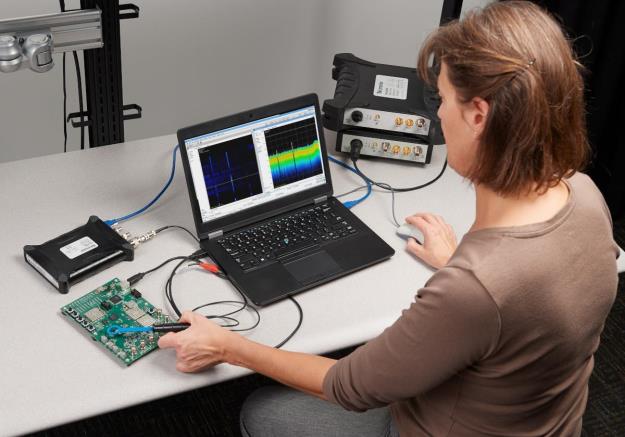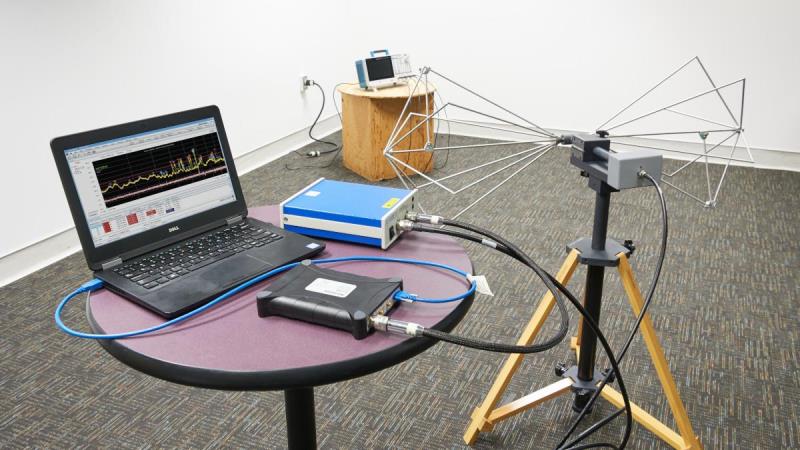

Dylan Stinson, Product Marketing Manager at Tektronix, recently penned an article for the Interference Technology’s 2022 EMC Testing Guide: How to Build Your Own EMI Troubleshooting and Pre-Compliance Kit. We wanted to share some of the key insights here.
Failing EMI/EMC compliance testing can certainly ruin a design engineer’s day. The costs and time delays associated with a failed test can add up quickly. Whether it’s additional compliance and external lab testing costs, engineering time with debugging, or in some cases, unexpected board spins, the cost and delays are never a good thing. To avoid these scenarios, a growing number of design teams – even those working on limited budgets – are developing their own in-house labs for conducting EMI troubleshooting and pre-compliance testing.
The big question of course, and one that Dylan explores in the article … Is putting together an EMI lab really worth the time and effort?
Looking at typical compliance test costs, there are a number of factors that need consideration, including:
- Type of product
- The number of countries
- The number of trips to an external test house
- Design and debug time
- The number of boards involved
- Certification test cost
While there are more than likely additional costs not included, Dylan calculates that the typical costs for EMC/EMI compliance testing can run from between $17,000 and $55,000, but the real-world scenarios that he shares add to the complexity and challenges:
- A design team has been taking products to a test house for years and uses the services of an external anechoic chamber provider to prepare for compliance. For the last two products they developed, they estimated taking 40 trips per year at a cost of $700 per half day, for a total of $28,000. In addition, they estimated the cost for full compliance testing, which involves more than just emission testing, was approximately $30,000.
- One team faced a major challenge as it spent a year trying to figure out where the ‘noise’ in their product was coming from. To test the product, they went to a lab with an anechoic chamber for pre-scans at a cost of $1,250 per hour for a technician, equipment, and chamber. They went to the lab once a quarter with up to 12 boards. On some occasions, they would spend a full day. In reviewing their EMC/EMI pre-compliance expenses, they discovered they had incurred lab expenses of approximately $30,000 for the year, not to mention product delays and lost staff time. This number also doesn’t include actual certification costs.
As complexities increase and componentry gets ever smaller, it’s important to find and identify issues in advance of production – during product development. This is where pre-compliance testing comes into play. Pre-compliance testing attempts to duplicate the way the full compliance tests are run to the best ability possible and to compare with actual emission test limits. This requires a calibrated EMI antenna, knowledge of the gains or losses in the measurement system, and emission limit tables based on the standards of interest.
While this is typically done inside a semi-anechoic chamber, this can add considerable expense and may not always be needed with modern equipment and software. Some spectrum analyzers configured with EMC pre-compliance software support accurate ambient measurement of the environment while the product is turned off, providing a baseline of RF noise present. Subtracting this from the actual measurement using a math trace, will allow you to distinguish between failures coming from the device under test and the surrounding environment.

Setting up your own EMC/EMI troubleshooting and pre-compliance testing lab is not as daunting as one might think. Here’s a general list of what you’ll need:
- Spectrum Analyzer or RF-capable Oscilloscope
Those spectrum analyzers that Tektronix delivers include:
- RSA306B
- RSA500
- RSA600
- Or our family of innovative oscilloscopes
- Antennas and Probes
For EMC compliance testing, the most common include:
- Loop: 10 kHz-30 MHz
- Boconical: 25 MHz-300 MHz
- Log Periodic: 300 MHz-1 GHz
- Horn: 1 GHz-26 GHz
- Line Impedance Stabilization Network
- Preamplifier
- Antenna Tripod
- Coaxial Cables
- Turntable
- Test Environment
For detail on equipment parameters and recommendations, please refer to Dylan’s article. Building an in-house EMC/EMI pre-compliance and troubleshooting lab might help you save considerable time and money.


